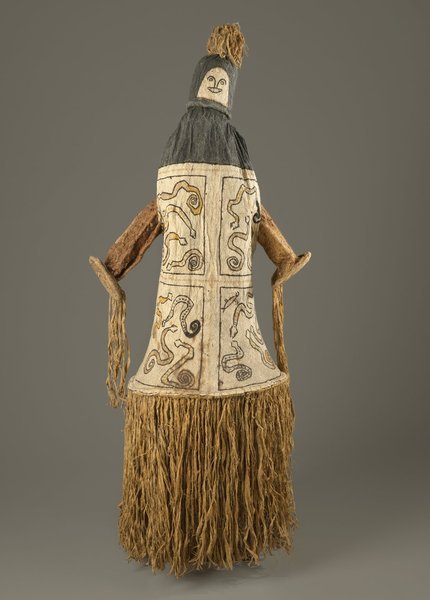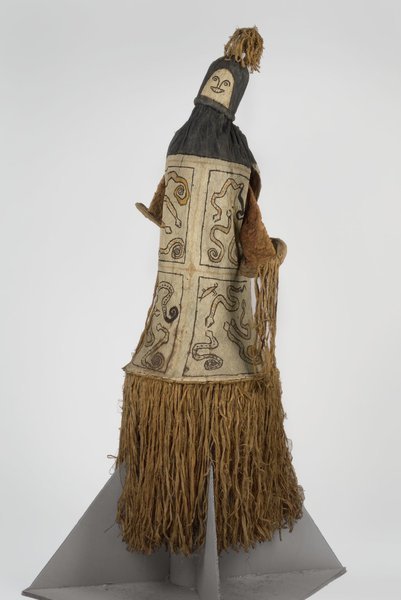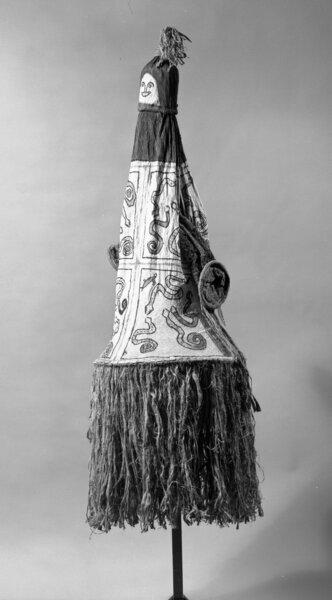Dance Mask (Takü) Item Number: 61.34.2 from the Brooklyn Museum



Description
Long, full-body mask of bark cloth with natural color fiber fringe at bottom. Object is narrow at top and wide at bottom held stiff by a wooden hoop. Upper portion painted black with a white face on one side and a tuft of fringe at the top. Center section is cream-colored with yellow and orange snakes separated into four parts by black and orange lines. Upper part of center section has side slits through which tubular brown arm sleeves protrude, their shape maintained by small wooden hoops at the top and bottom. A fiber fringe hangs from the sleeves. Condition is good.
Label
The Pamí’wa, commonly referred to as the Cubeo, live in the present-day countries of Colombia and Brazil and are known for elaborate dance masks made of painted bark cloth. These full-body masks are worn for the mourning, or ónyo (“weeping”), ceremony, a multiday ritual held approximately a year after an individual’s death. The masks represent the spirits of primordial animals who were created by the deity Kúwai at the beginning of time and were prototypes for real species. Made and worn by men, the masks do not come alive until they are danced, thereby creating a connection between ancestral and present-day worlds. Geometric designs are more common on such masks (see nearby photographs) than the snakes depicted here, which may represent the spirit Ala, a venomous viper.
Los Pamí’wa, comúnmente llamados Cubeo, viven en los actuales países de Colombia y Brasil, y se conocen por sus elaboradas máscaras de danza hechas de tela de corteza pintada. Estas máscaras de cuerpo completo se usan para el duelo, o ceremonia ónyo (“lamento”), un ritual de varios días realizado aproximadamente un año después de la muerte del individuo. La máscara representa los espíritus de animales primordiales creados por la deidad Kúwai al comienzo de los tiempos y que eran prototipos para las especies verdaderas. Hechas y usadas por hombres, las máscaras no cobran vida hasta que se danza con ellas, creando así una conexión entre los mundos ancestral y presente. Los diseños geométricos son más comunes en dichas máscaras (ver fotografías) que las serpientes representadas aquí, que pueden representar al espíritu Ala, una víbora venenosa.
Credit Line
Frank L. Babbott Fund
Item History
- Made between 1900 and 1999
What
- Name
- Dance Mask (Takü)
- Identification Number
- 61.34.2
- Type of Item
- dance mask
- Material
- bark cloth, wood and pigment
- Overall
- length 69.0 in, width 24.0 in, height 22.5 in
Who
- Culture
- Pamí'wa and also known as Cubeo
Where
- Holding Institution
- Brooklyn Museum
When
- Creation Date
- between 1900 and 1999
Other
- Classification
- Masks